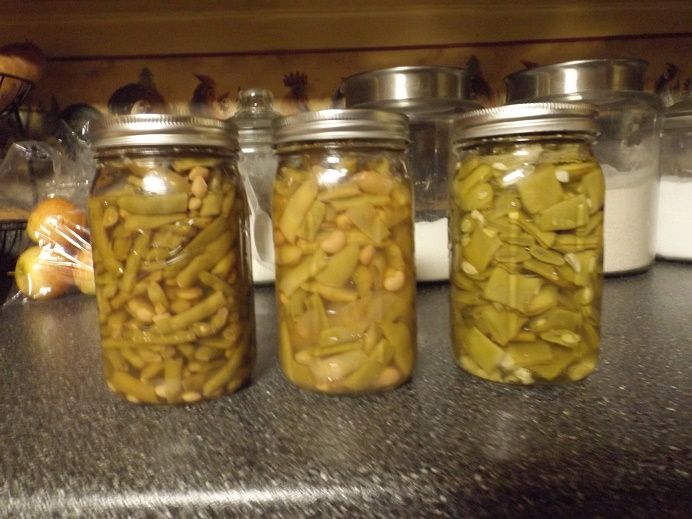|
|
Post by 12540dumont on Apr 26, 2014 16:09:35 GMT -5
email Sylvia Davatz at Solstice Seed. She is the keeper of the St. Gen
|
|
|
|
Post by homegrower on Apr 27, 2014 2:45:50 GMT -5
Thanks...i tried to google it but came out empty  |
|
|
|
Post by flowerweaver on Apr 27, 2014 13:38:12 GMT -5
I'm growing the Hill Family Greasy bean from heirlooms.org. It's my first time to try them.
|
|
|
|
Post by homegrower on Apr 28, 2014 11:01:16 GMT -5
Never heard about that one before. I hope they do well for you.
|
|
|
|
Post by kyredneck on Sept 21, 2014 6:37:39 GMT -5
Blackox wrote: “I have also heard that they are in high demand in some places, and can cost somewhere around $65 a bushel…”
IMHO, aside from the novelty/ supply & demand factor, their typically smaller size equates to more weight per bushel along with being more labor intensive to pick a bushel and results in the higher prices. I know personally from stringing them that it takes considerably longer to fill a quart jar with greasy cutshorts than it does with other snap beans, but the quart jar will be more ‘dense’ with beans:

‘Greasy Grits’ (L), Goose/Missouri Wonder mix (M), Kwintus (R).
Galina wrote: “I love the combination of green bean flavour and getting nutty beanies inside the green pods at the same time. It is a different eating experience. Normally in the UK we eat either green beans or shelled/dry reconstituted bean seeds. These beans (and some non-greasy varieties too) give you both at the same time, which is a tasty culinary experience and a lovely 'mouth feel'.
My seeds were from Bill Best at SMAC and from Southern Exposure Seed Exchange.”
Dustdevil wrote: “In defense of greasy beans, they are more tender and flavorful than most commercial green beans. It is customary to grow them in Southern Appalachia with the beans bulging along the sides of the hull. The larger beans inside result in more protein than conventional green beans. Most Northerners don't know what they are or want them since they have strings. I think they're great!”
It has everything to do with personal taste nowadays, however it wasn’t always so:
“….Bill Best gives this definition of "full beans":
"Full Beans-This is a term used to describe a bean where the seed is fully mature within the hull and the bean is ready to harvest. Heirloom beans are traditionally harvested at the full stage whether they are to be used fresh, canned, pickled or making leather britches."
He goes on to write:
"Heirloom beans, at least those of the Southern Appalachians, are typically harvested at the "full" stage, that is when the seeds within the hulls have reached near full maturity. We of the Southern Appalachians have depended on our beans to be a protein food, one that 'sticks to one's ribs'."….”
forums.gardenweb.com/forums/load/legumes/msg0111143728305.html
|
|
|
|
Post by reed on Oct 6, 2014 19:37:59 GMT -5
I got plenty of greasy beans. Don't know what kind I just call them brown, speckled, and white. The white ones came from Bill Best in a trade. They all do real well for us and are good green, they are small only about four or five inches and have strings but they are yummy. When they dry they tend to pop open on their own and are thus easy to shell. I like them best dry for ham and beans.
We canned lots of the brown ones, they are slightly larger than speckled or white, as green beans this year but I have some little speckled and white ones I could share. Picked up three or four more kinds at Bill's seed swap this past Saturday but they don't look much different. I think I might just mix them all together.
|
|
|
|
Post by kyredneck on Oct 7, 2014 17:11:45 GMT -5
Reed, I intend to grow several 'greasy beans' next year, isolated enough to save seed to swap, and won't hesitate to 'mix' them when it comes to canning, it amounts to a fuller spectrum of flavor when different varieties are mixed! Tomato sauce/juice same way, mix em' all up and man, you have ambrosia!
[add]
A favorite canning 'combo' of mine already is Missouri Wonder with Goose beans. I grew them right next to each other this year, they crossed over to one another's arbors, and have probably unintentionally begun my own landrace because the Goose are reported to be promiscuous. |
|